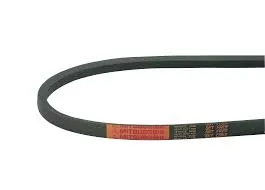- Arabic
- French
- Russian
- Spanish
- Portuguese
- Turkish
- Armenian
- English
- Albanian
- Amharic
- Azerbaijani
- Basque
- Belarusian
- Bengali
- Bosnian
- Bulgarian
- Catalan
- Cebuano
- Corsican
- Croatian
- Czech
- Danish
- Dutch
- Afrikaans
- Esperanto
- Estonian
- Finnish
- Frisian
- Galician
- Georgian
- German
- Greek
- Gujarati
- Haitian Creole
- hausa
- hawaiian
- Hebrew
- Hindi
- Miao
- Hungarian
- Icelandic
- igbo
- Indonesian
- irish
- Italian
- Japanese
- Javanese
- Kannada
- kazakh
- Khmer
- Rwandese
- Korean
- Kurdish
- Kyrgyz
- Lao
- Latin
- Latvian
- Lithuanian
- Luxembourgish
- Macedonian
- Malgashi
- Malay
- Malayalam
- Maltese
- Maori
- Marathi
- Mongolian
- Myanmar
- Nepali
- Norwegian
- Norwegian
- Occitan
- Pashto
- Persian
- Polish
- Punjabi
- Romanian
- Samoan
- Scottish Gaelic
- Serbian
- Sesotho
- Shona
- Sindhi
- Sinhala
- Slovak
- Slovenian
- Somali
- Sundanese
- Swahili
- Swedish
- Tagalog
- Tajik
- Tamil
- Tatar
- Telugu
- Thai
- Turkmen
- Ukrainian
- Urdu
- Uighur
- Uzbek
- Vietnamese
- Welsh
- Bantu
- Yiddish
- Yoruba
- Zulu
Abu . 10, 2024 22:40 Back to list
Exploring the Benefits and Applications of Webbing Slings and Flat Belts in Industry
Understanding Webbing Slings and Flat Belts A Guide to Safe and Efficient Lifting
In the world of lifting and rigging, the safety and efficiency of operations depend significantly on the equipment utilized. Among the various tools available, webbing slings and flat belts stand out as versatile and reliable options for lifting, securing, and transporting loads. This article explores the characteristics, uses, and advantages of webbing slings and flat belts, providing insights into their applications in diverse industries.
What Are Webbing Slings?
Webbing slings are lifting devices made from high-strength synthetic materials, primarily nylon or polyester. These slings are woven into flat, durable strips, offering flexibility and strength to lift heavy loads safely. Webbing slings come in various configurations, including single-ply and multi-ply designs, which determine their load capacities. Their lightweight nature and ease of handling make them a popular choice for many lifting applications.
One of the primary advantages of webbing slings is their ability to distribute weight evenly across the load. This distribution helps reduce the risk of damage to the load and minimizes the potential for sling slippage. Additionally, webbing slings are often color-coded, indicating their load capacity, which aids in selecting the right sling for specific tasks.
Applications of Webbing Slings
Webbing slings are widely used in construction, manufacturing, and logistics operations. They are effective for lifting and moving heavy machinery, construction materials, and even delicate objects like glass sheets, ensuring that they remain undamaged during transport. The soft nature of webbing slings prevents abrasions and scratches, making them ideal for handling sensitive materials.
In addition to their lifting capabilities, webbing slings are also used in conjunction with other rigging equipment, such as hooks, shackles, and pulleys, to enhance their functionality. Their versatility is further demonstrated by their ability to be used in various configurations, including straight lifts, choker hitches, and basket hitches, adapting to different lifting needs.
webbing slings flat belt

Understanding Flat Belts
Flat belts, on the other hand, are primarily used for power transmission and conveying materials rather than lifting. These belts are elongated, continuous bands constructed from materials like rubber, leather, or synthetic fibers. Flat belts work by connecting pulleys to transmit power from one part of a machine to another, making them an essential component in mechanical systems.
Flat belts are widely employed in machinery such as conveyors, where they transport products or materials from one location to another. Their design allows for smooth movement, reducing friction and wear on both the belts and the materials being moved. Flat belts are also relatively easy to maintain, requiring minimal adjustments once properly installed.
The Benefits of Using Webbing Slings and Flat Belts Together
While webbing slings and flat belts serve different purposes, they can complement each other in various operations. For example, in a manufacturing setting, webbing slings can be used to lift materials into position on a conveyor system powered by flat belts. This combination enhances operational efficiency while ensuring an optimal safety level during lifting and conveying tasks.
Moreover, both webbing slings and flat belts are designed with safety in mind. Their ability to handle substantial weights without stretching or breaking contributes to safer operational environments. Adopting these tools can significantly reduce risk while enhancing productivity in lifting and transporting applications.
Conclusion
Webbing slings and flat belts are integral components in modern lifting and conveying operations. Understanding their unique features and advantages allows businesses to utilize these tools effectively, promoting safer and more efficient workflows. Whether lifting heavy loads with webbing slings or transmitting power with flat belts, the combination of these tools can significantly benefit various industries, ensuring that operations run smoothly and reliably.
-
Korean Auto Parts Timing Belt 24312-37500 For Hyundai/Kia
NewsMar.07,2025
-
7PK2300 90916-T2024 RIBBED BELT POLY V BELT PK BELT
NewsMar.07,2025
-
Chinese Auto Belt Factory 310-2M-22 For BMW/Mercedes-Benz
NewsMar.07,2025
-
Chinese Auto Belt Factory 310-2M-22 For BMW/Mercedes-Benz
NewsMar.07,2025
-
90916-02660 PK Belt 6PK1680 For Toyota
NewsMar.07,2025
-
drive belt serpentine belt
NewsMar.07,2025

